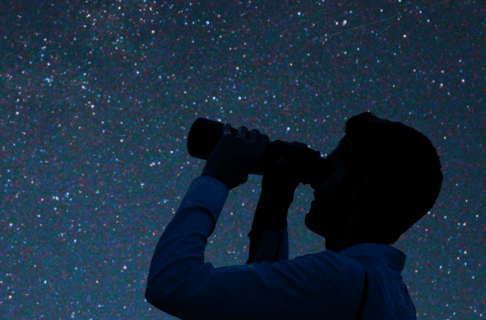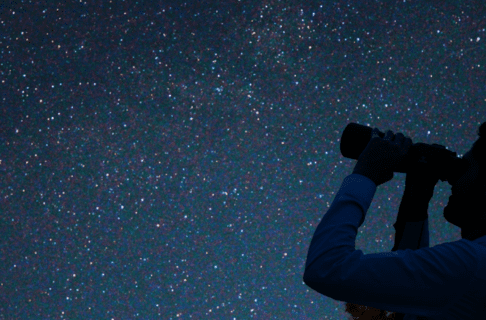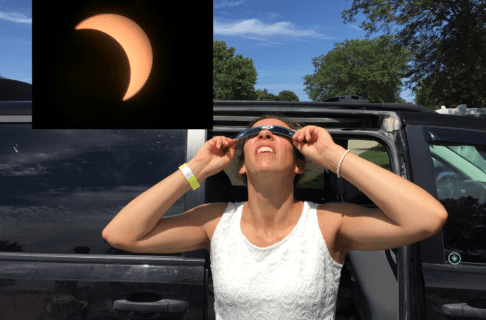Posted on: Thursday November 21, 2019
Thursday, November 20, 2019 may provide a rare meteor outburst – but only for a few minutes.
The annual Monocerotid meteor shower normally produces about 1 or 2 meteors per hour – and that’s if the sky is dark with no moon. It’s not something some skywatchers would even bother to put on the calendar. In the last couple of decades, however, astronomers have begun to understand meteor showers in more detail, and can predict when activity may pick up. This year, an outburst is predicted to occur at 10:50 p.m. Central Standard Time, and southern Manitoba is predicted to be cloud-free. So what’s going on?
A meteor (or shooting star, or falling star – they all mean the same thing) is caused when the Earth slams into a piece of interplanetary dust about the size of a grain of sand. Space isn’t totally empty – besides planets, and asteroids, and comets, there’s also smaller stuff, down to the size of microscopic dust particles. These tiny particles burn up when they hit the earth because they’re travelling at 40,000 km/h. Just the friction of passing through the air heats them up so much that they vaporize and create a trail of light that we can see from the ground. On a given night, you might see a half-dozen of these per hour if you watch the sky carefully from a dark location. Most of the time, we don’t notice these because we’re not watching the sky carefully, or nearby lights interfere and make it hard to see them.
So, one piece of dust = one meteor. It doesn’t take much of a logical leap to see that more dust means more meteors. If the earth goes through a big cloud of dust, a whole bunch of meteors will happen all on the same night. That is a meteor shower. Each year on the same night, Earth is in the same spot, and goes through the same dust bunny, creating an annual meteor shower.
Through careful analysis, astronomers have determined that the Moncerotid meteor shower has a very dense clump in it, that usually the earth just skims the edge of. But, as gravity adjusts the particles each time the Earth goes by, things change, and so this year we’re expected to hit the dense clump head-on.
How do I see it?
For the best view, you want to dress up warm, and head out of the city to a dark location. Bring a reclining lawn chair or something so you can lean back and look at at the whole sky at once. (Try to stay off the ground, which will suck heat out of you and make you cold very quickly.) Point your feet generally southeast (towards Orion the hunter, if you know your constellations) and look straight up. Don’t look at your phone, because even a quick peek will kill your night vision and maybe make you miss the whole thing.
The time is somewhat uncertain, so be prepared to stay outside in Manitoba November night temperatures for a couple of hours. I’m going to start watching about 10pm and watch until midnight (or until t happens).
What will we see?
Short answer: we won’t know for sure until it happens. But, if the prediction is correct, you’ll see the stars at first. Orion will be visible in the south, and other constellations of the winter sky as well. The brightest star in the sky, Sirius, will be just rising below Orion. Farther left (almost due east) is another bright star, Procyon. Occasionally, you will see a shooting star flash through your field of view. As the time gets closer, you’ll see meteors more often, and the interval between them will shrink. One every 5 minutes, then 1 every couple of minutes… then two or three a minute. If you trace them backwards, they all seem to radiate from a point near Procyon. If the prediction pans out, at the peak you might be seeing 5-10 meteors per minute for several minutes around 10:50 p.m. Then, the rate will subside, back to a couple a minute, and then one every few minuets, and then back to one every 10 minutes or so.
Or, maybe nothing will happen – the Earth might miss the dust bunny completely.
Or… maybe the dust bunny is even denser than we thought, and we’ll see even more meteors than predicted. Who knows?
For more information on this shower, visit the International Meteor Organization’s page. You can also find info there on how to count meteors and contribute to the science of understanding these rare and unpredictable natural spectacles.






